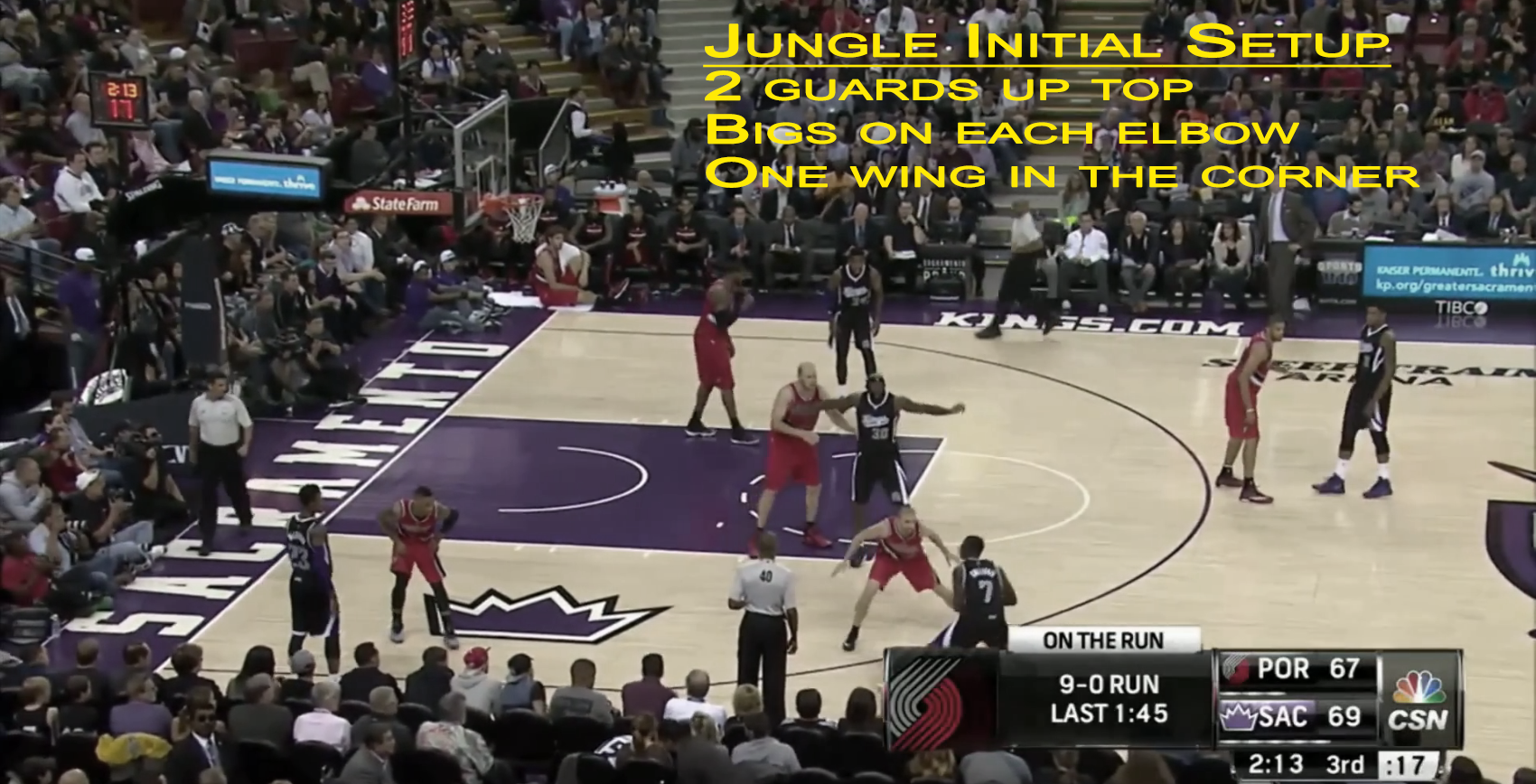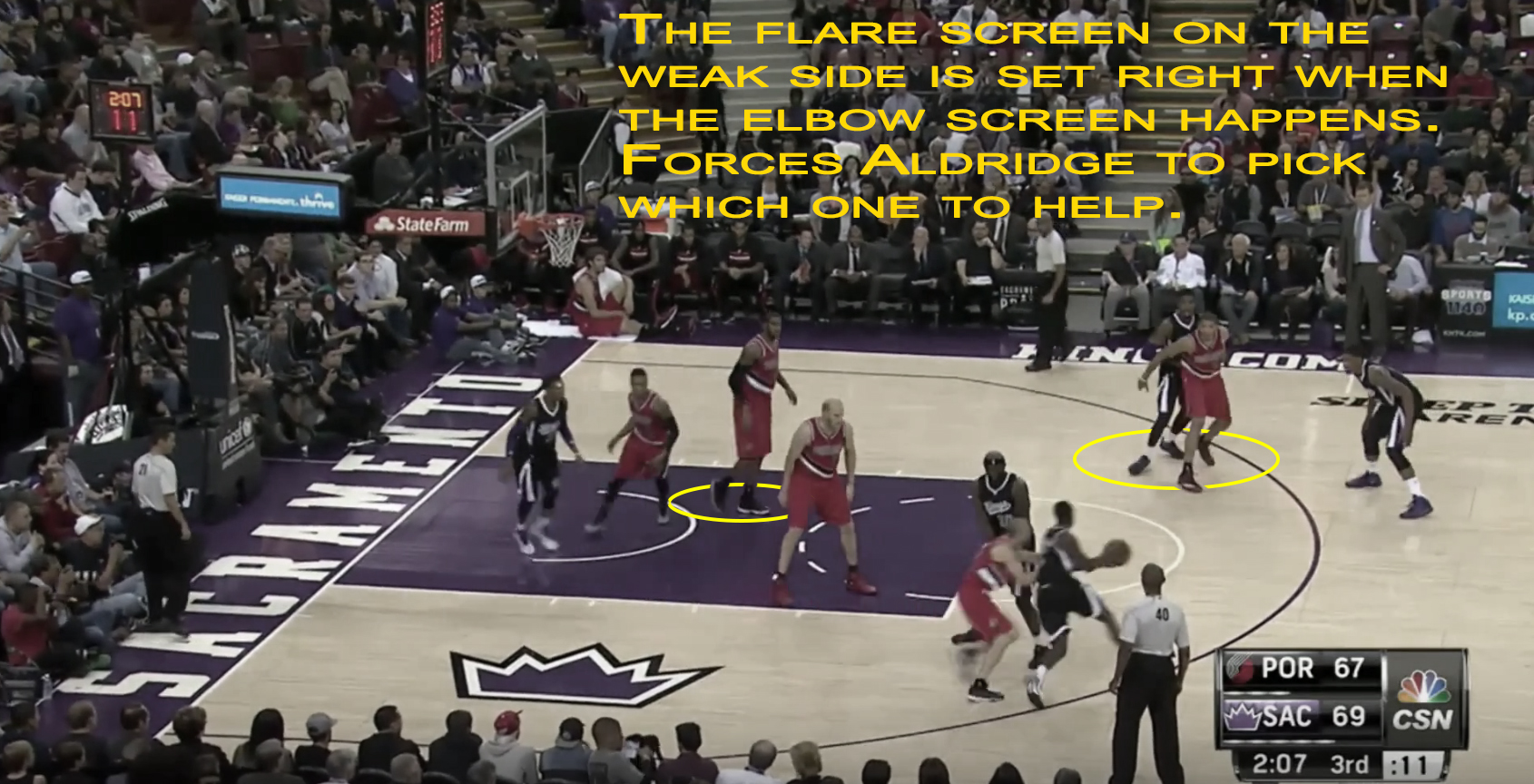Among the many things that Summer league provided Nuggets fans, the games were a first look at some of head coach Mike Malone’s offensive values, tendencies, and preferences. Although assistant coach Micah Nori was at the helm on the sidelines during games, Malone’s fingerprints were all over the team’s style of play. Malone himself attended each game and even provided notes and feedback to both the players and the coaching staff during half time and before and after the games.
Despite the fact that the team only had a week to prepare, only played five games, and had a roster that was mostly made up of guys that won’t see a minute of actual NBA action, there was still a lot to be learned about what to expect from the Nuggets offense this season. One of those things that can be learned is the way Malone uses a set called “Jungle.”

Jungle begins with a two-guard front, bigs on both elbows and a wing in the strong-side corner. The set is designed to get the ball to one of the team’s bigs at the elbow to initiate a series of cuts and reads. There are two main advantages to initiating a possession with this set up. First, the set begins very high on the court, which allows for a lot of spacing under the rim for various backdoor cuts and cuts into the paint. Secondly, it puts the pivot of the offense near the center of the floor which makes it very difficult for defenses to over-help or deny passes. A defender must guard his man below the elbow in order to prevent a cut for a layup and must also guard his man above the elbow in order to prevent an open three-pointer. Guarding a player while moving from above the pivot to below the pivot and vice versa is very difficult.
After the ball goes to the elbow, the point guard sets a screen for the wing in the corner. This is the first action that lends itself to multiple outcomes. Both the screener and the player being screened have options and must read one another to know what to do next. The most common action is for the corner wing to make a curl cut toward the paint. This option is rarely open but it forces both the screener’s man and the elbow big’s man to sag off and provide help in the paint.

After the curl cut, the point guard sprints back toward the elbow to receive a dribble handoff. Right at the moment he receives the ball from the elbow, the two weak side players run a flare screen. The timing of this action is important because once again, the idea is to force every defender to choose between guarding two different things at once. When the action is well timed, the helpside defense must either over-commit and risk losing one of the weak side players, or stay close to their man and risk giving up and open lane to the ball handler.

The Nuggets’ playbook was fairly stripped down for summer league since the team only had a few days to prepare, but the team ran Jungle several times during Summer League and were able to get a variety of looks out of it. One reason this set fits the personnel of the Nuggets so well is because it takes advantage of two of the team’s biggest strengths on offense: big man passing and guards slashing to the rim. Nikola Jokic and Jusuf Nurkic are both talented passers from the elbows and both will excel at reading the passing lanes in this set. Gary Harris, Emmanuel Mudiay, Will Barton, and Wilson Chandler all excel at cutting to the rim.
There are countless variations to this set and there are reads and reactions to almost every screen and cut. One common and interesting set action out of Jungle is a set known as Jungle Fence. Fence is another term for “elevator doors” and in Jungle Fence the corner wing curls under the rim and pauses before sprinting up through the elevator screen at the free throw line. The video above has several examples of Jungle Fence from various teams.
Golden State ran this set a lot and with Stephen Curry and Klay Thompson in the corner spot, the Warriors were able to create a lot of high percentage looks out of it. The Nuggets don’t have a shooter as reliable as the splash brothers but they will still run this set for quick three-point looks as well as to force a switch out on the perimeter. Often times in a scramble, the forward or center will jump out on the elevator screen to take away the open three-pointer. The Nuggets will likely run players like Barton, Jameer Nelson, and Mudiay in the corner spot and then force defenses into switches and then attack late in the shot clock.
BONUS
This offensive set provides a great example of just how many options there are on any given possession. On many possessions, a coach will call for a specific look in a set and will expect the team to execute a very specific option. Jungle Hoya Fence, for example, is designed to get the wing player coming off of the elevator screen and a coach might want each player to stick to the script very closely.
However, coaches will build principles over the course of a season and on most possessions during the middle part of the game players are allowed to improvise within a possession as long as they stay within the coach’s principles. In the video below, I’ve provided just a portion of basic options that every player has out of this set. Every “option” forces the other four guys on the court to read and react in order to stay within the basic framework of the play.


